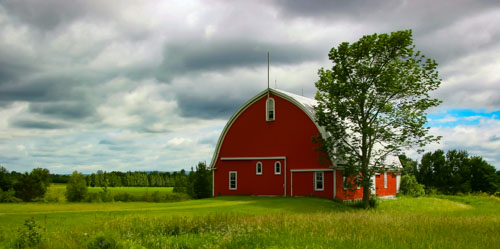Regenerative farming is a way of farming that focuses on improving the health of the soil. Soil that has been degraded using heavy machinery, fertilizers and pesticides in intensive farming. Regenerative farming will restore farmland and reduce the environmental impact, including lowering greenhouse gas emissions.
Why is regenerative farming needed?
According to the United Nations, agriculture accounts for over a third of greenhouse gas emissions globally. And more than half of the world’s agricultural land is degraded. This leads to productivity losses of $400 billion a year and is a risk to food security in the future.
Within 50 years, there may not be enough soil left to feed the world, according to regenerative farming organization Regeneration International.
Intensive farming also churns up CO2 naturally stored in soil and releases it into the atmosphere. This contributes to global warming that is driving climate change. Damaged soil and eroded land can also make environments more vulnerable to extreme weather events like flooding or droughts. Which will increase in frequency and intensity as the Earth warms.
What does it involve?
Regenerative farming is not a specific practice itself. Rather, proponents of regenerative farming use a variety of sustainable farming techniques in combination. Here are some of the techniques:
- Minimizing the ploughing of land, which disturbs the soil structure and releases carbon.
- Using cover crops, mulches, composts, and manures to enhance soil organic matter and fertility.
- Rotating crops and diversifying plant species to increase biodiversity and reduce pest and disease pressure.
- Integrating livestock with crops to recycle nutrients, improve soil structure and reduce erosion.
- Adopting agroforestry practices, which combine trees with crops and animals to provide multiple benefits such as shade, windbreaks, food, fuel, and income.
The benefits

Regenerative farming can provide multiple benefits for farmers, consumers and for our planet. Here are just a few:
- Increased crop yields and quality. Healthy soil will produce more food and nutrition, as well as more resilient crops that can withstand droughts, floods and harmfull pests.
- Reduced input costs and risks. As soil health improves, input requirements such as fertilizers, pesticides and irrigation may decrease, saving money and reducing environmental impact.
- Enhanced carbon sequestration. It will draw carbon from the atmosphere and store it in the soil, mitigating climate change and improving soil fertility.
- Improved water management. Regenerative farming can improve water infiltration, retention, and quality in the soil, reducing runoff, erosion, and pollution.
- Increased biodiversity. It will support a diversity of plants, animals and microorganisms in the soil and above ground, enhancing ecosystem services such as pollination, pest control and nutrient cycling.
How to get started with regenerative farming?
If you are interested in adopting regenerative farming practices on your farm, here are some steps you can take:
- Assess your current soil health and identify areas for improvement. You can use simple tests such as infiltration rate, aggregate stability, earthworm count or soil color to measure your soil quality. Or you can also send soil samples to a lab for more detailed analysis.
- Learn from other farmers who are practicing regenerative farming in your area or online. You can join networks such as Climate Farmers, Regeneration International, or Noble Research Institute.
- Experiment with different practices that suit your context and goals. You can start small by trying one or two practices on a portion of your land, such as planting cover crops or adding compost. Monitor the results and adjust accordingly.
Farm management software for Regenerative Farming
Regenerative farming is an all-inclusive approach to agriculture that aims to regenerate natural resources and enhance biodiversity. It is based on principles such as minimizing tillage, maximizing diversity, integrating livestock, and using cover crops. With farm management software designed for regenerative farming, you can easily plan, monitor, and evaluate your farm operations. You can track your soil health indicators, crop rotations, grazing patterns, and carbon footprint. AgNote is practical farm management software for row, permanent and vegetable crops. If you are exploring simple to use farm management tools, please check out AgNote. You can register today for a free seven-day trial!
Conclusion
Regenerative farming is a promising solution for climate change and food security that can benefit farmers, consumers and the planet. By improving soil health, it will increase crop yields and quality, reduce input costs and risks, enhance carbon sequestration, improve water management and increase biodiversity.